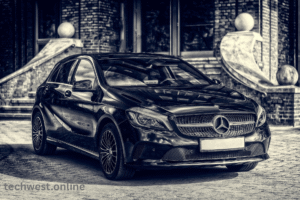Introduction to Mercedes Hybrid Technology
Mercedes-Benz has always been a trendsetter in car innovation, and its hybrid technology is a testament to this heritage. With the blending of internal combustion engines and sophisticated electric powertrains, Mercedes hybrid technology offers a harmonious integration of performance, efficiency, and sustainability. As the automobile sector moves towards cleaner alternatives, Mercedes has taken a leadership role in hybrid cars, with models designed to suit both luxury and eco-awareness. This article delves into the technicalities of Mercedes hybrid technology, how it has evolved, the major features, and how it is shaping the future of driving.
What is Mercedes Hybrid Technology?
Mercedes hybrid technology combines a conventional gasoline or diesel engine with an electric motor and battery system. The harmony provides vehicles with different modes of operation, including solely electric for short journeys, gasoline for long trips, or blended for maximum efficiency and performance. The brand’s hybrid systems, commonly marketed as EQ Power, are engineered to make vehicles more fuel-efficient and emit lower amounts of pollutants while still delivering Mercedes’ high-performance credentials.

Mercedes hybrid technology is built around its plug-in hybrid electric vehicles (PHEVs). These can be charged from outside, providing an all-electric range for daily use while using the combustion engine for longer trips. Some of the popular models such as the Mercedes C-Class, E-Class, S-Class, and GLE come equipped with this cutting-edge technology, presenting them as convenient choices for green-conscious drivers who will not settle for anything less than luxury and power.
Evolution of Mercedes Hybrid Systems
Mercedes-Benz started researching hybrid technology in the early 2000s, and its maiden hybrid model, the S400 Hybrid, arrived on the scene in 2009. The company has since progressed quite far in optimizing its hybrid systems. The launch of the EQ Power range brought a seminal shift, implementing the latest advances in battery technology, electric motors, and energy management systems.
Mercedes hybrids now have third-generation plug-in hybrid technology, which includes better electric range, quicker charging times, and better integration between the electric and combustion elements. Research and development efforts of the company have led to hybrids that now provide up to 60 miles of electric-only range in select models, making them perfect for city driving and short trips.
Major Features of Mercedes Hybrid Technology
1. Plug-In Hybrid Systems
Mercedes plug-in hybrids use high-capacity lithium-ion batteries and can be charged using a common household outlet or a quick-charging station. This enables drivers to drive in electric mode for routine commutes, saving on fuel and emissions. For example, the Mercedes GLE 350e 4MATIC has an electric range of around 40-50 miles, depending on driving circumstances.
2. Intelligent Energy Management
Mercedes hybrids employ advanced energy management systems to achieve the best performance and efficiency. The smart hybrid drive strategy scans driving conditions, map data, and driver behavior to establish the most effective use of electric and combustion power. This provides smooth power source transitions while achieving optimal fuel efficiency without penalizing performance.
3. High-Performance EQ Power Models
Mercedes-AMG, the performance arm of the brand, has adopted hybrid technology through offerings such as the AMG E 53 and GT 63 S E Performance. These cars utilize electrified powertrains alongside turbocharged engines for thrilling acceleration and power output levels over 800 horsepower in some instances. The application of electric motors improves torque delivery with instant response and dynamic behavior.
4. Regenerative Braking
Mercedes hybrids have regenerative braking systems that harness energy when decelerating and store it in the battery. Not only is efficiency enhanced, but the electric range is also prolonged, making the cars more environmentally friendly for use on a day-to-day basis.
5. Smooth Integration with Luxury
Mercedes makes sure that its hybrid models continue to offer the luxury and sophistication that the brand is known for. Amenities such as premium interiors, upscale infotainment systems, and driver-assistance technologies are directly combined with hybrid powertrains, creating a driving experience that is both responsible and luxurious.
Advantages of Mercedes Hybrid Technology
1. Environmental Influence
Mercedes hybrids lower CO2 emissions substantially over conventional combustion-engine vehicles. The capability to travel short distances in electric mode eliminates urban-commute tailpipe emissions, leading to cleaner air and a smaller carbon footprint.
2. Fuel Efficiency
By marrying electricity and gasoline power, Mercedes hybrids provide excellent fuel economy. Models such as the C 300e are able to produce more than 100 MPGe (miles per gallon equivalent) when operating in combined electric and gasoline modes, which makes them economical for drivers.
3. Tax Incentives and Savings
Mercedes hybrids are eligible for tax credits, lower registration fees, and carpool lane access in most areas. With these incentives and lower fuel prices, Mercedes hybrids are a smart choice for frugal buyers.
4. Enhancement of Performance
Mercedes hybrids include an electric motor that delivers instantaneous torque, boosting acceleration and responsiveness. This is especially noticeable with AMG models, as hybrid technology takes performance to new levels, competing directly with conventional high-performance vehicles.
5. Versatility
Mercedes hybrids provide the convenience of toggling between electric and gasoline modes, so they are well-suited for all types of driving situations. Whether cruising city roads or undertaking long highway drives, the vehicles adjust to the needs of the driver.
Top Mercedes Hybrid Models
1. Mercedes C-Class Plug-In Hybrid (C 300e)
The C 300e pairs a 2.0-liter turbocharged engine with an electric motor, producing a combined output of approximately 313 horsepower. It has an electric range of up to 60 miles and is ideal for everyday commutes and short drives.
2. Mercedes E-Class Plug-In Hybrid (E 350e)
The E 350e balances luxury and efficiency with a sophisticated interior and an electric range of around 40 miles. Its quiet power delivery and sophisticated driver-assistance features have made it a hot choice among business executives.
3. Mercedes GLE 350e 4MATIC
This mid-size SUV couples hybrid efficiency with off-road capability. Its plug-in hybrid drivetrain delivers plenty of power for towing and off-road driving with its fuel-saving capabilities.
4. Mercedes-AMG GT 63 S E Performance
The fastest road-going AMG vehicle, this hybrid supercar is powered by more than 800 horsepower of electrified performance, coupled with stunning speed and handling.
The Future of Mercedes Hybrid Technology
Mercedes-Benz is focused on electrifying all its models by 2030, and hybrid technology will be central to achieving that goal. It is heavily investing in next-generation batteries, where electric range will be boosted and charging times shortened. Mercedes is also looking into sustainable materials and manufacturing processes to maximize the reduction of the environmental footprint of its vehicles.
Another thrilling advance is the incorporation of artificial intelligence and machine learning into hybrid systems. Upcoming Mercedes hybrids will feature even more intelligent energy management systems that can anticipate driver behavior and optimize power consumption in real-time. This will improve efficiency and performance alike, cementing Mercedes as a forerunner in automotive technology.
Challenges and Considerations
While Mercedes hybrid technology has many advantages, there are some challenges that need to be weighed. The initial cost of hybrid models is generally higher than gasoline models because of the innovative technology and battery systems. Long-term fuel savings and possible tax incentives, however, can help pay for this initial investment.
Another factor to consider is charging infrastructure availability. While Mercedes hybrids have the ability to drive frequently without needing to be charged, access to fast-charging points makes them more convenient. As global charging infrastructures grow, this issue is diminishing.
Why Select Mercedes Hybrids?
Mercedes hybrid technology stands out for its ability to combine sustainability with the brand’s signature luxury and performance. Whether you’re seeking a fuel-efficient daily driver or a high-performance hybrid supercar, Mercedes offers a model to suit your needs. The EQ Power lineup represents the future of driving, where environmental responsibility and exhilarating performance coexist.
For environmentally aware consumers, Mercedes hybrids offer a sensible solution without compromising comfort or style. The company’s focus on innovation means that its hybrid offerings will only get better, delivering even more efficiency and performance in the future.
Conclusion
Mercedes hybrid technology proves the company’s focus on innovation, sustainability, and performance. By marrying electric and combustion power, Mercedes has built a range of vehicles that serve the various needs of today’s drivers. From fuel-sipping C 300e to the beastly AMG GT 63 S E Performance, Mercedes hybrids provide a driving experience like no other. As the car world becomes increasingly environmentally conscious, Mercedes-Benz is leading the charge, redefining what it means to drive a luxury hybrid car.
